Visiting all the villages of these valleys, I found almost in every village a Women’s Group and a Youth Club. From the beginning I realised that these two organizations are the only in the Sherpa society in each town. That’s why I think it’s important to dedicate a post.
THE WOMAN IN SHERPA SOCIETY
In the Sherpa society, women have always had an equal treatment with men and have had a preponderant role in family life. Most decisions in the family have been taken since always by women, and now are still taken. The inheritances, properties, money and livestock are distributed equally between men and women.
Perhaps it is now anecdotal, but historically there has been a singular fact in the Sherpa society that I find interesting to explain. It is polyandry, the fact that a woman has more than one husband, which has been until a few years ago a very extended and prestigious practice. In contrast, polygamy, a man who has more than one wife, despite being accepted, was a very rare practice. Both practices are currently non-existent.
As far as I have seen during this time, the situation of men’s and women’s equality, although in theory exists, there are aspects that due to the impact of tourism or the evolution of forms of entertainment or communication, they have represented a step back in some aspects, at least from the point of view of Western culture.
The new jobs created from the tourism, porters and guides mainly but also drivers of caravans of transport by animals, are the cause that many men spend long periods away from home, working for treks and expeditions.
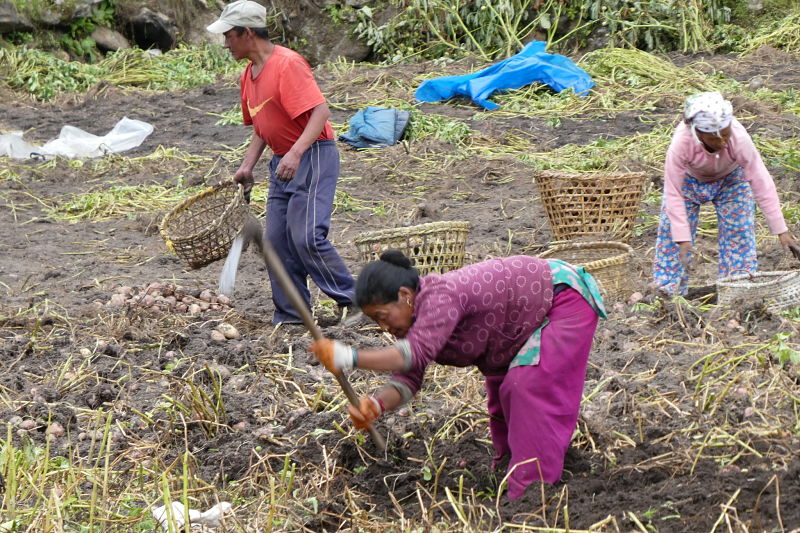
Digging potatoes 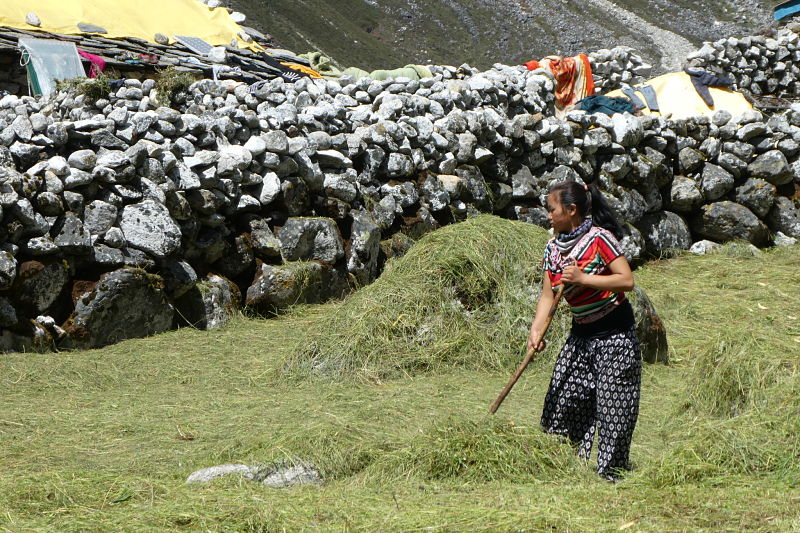
Drying grass
This, little by little, supposed that the agricultural and livestock work fell on women, who added them to those that traditionally already did, to take care of the house and the family. Thus, nowadays women are the ones that you see by digging potatoes, cutting grass, milking naks (yak nut) or leading the herds. The most descriptive image of this situation is picture of a woman working in the garden with the crib on the back.
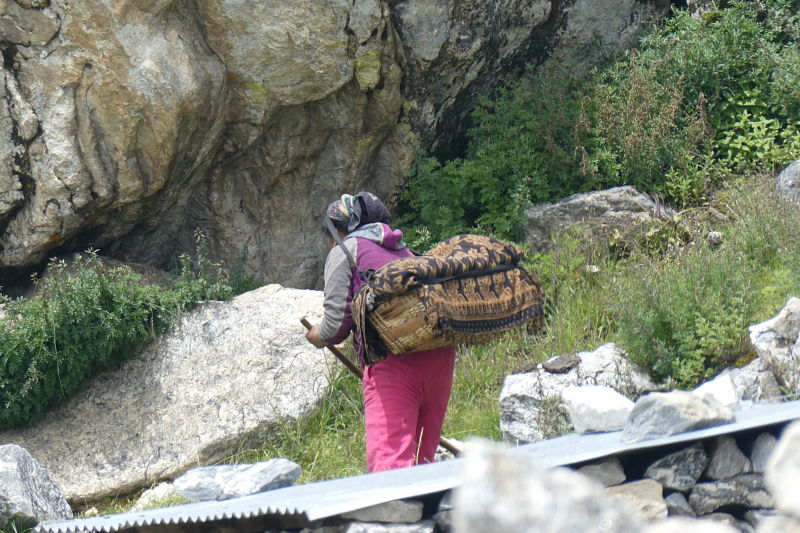
Working with the crib on the back 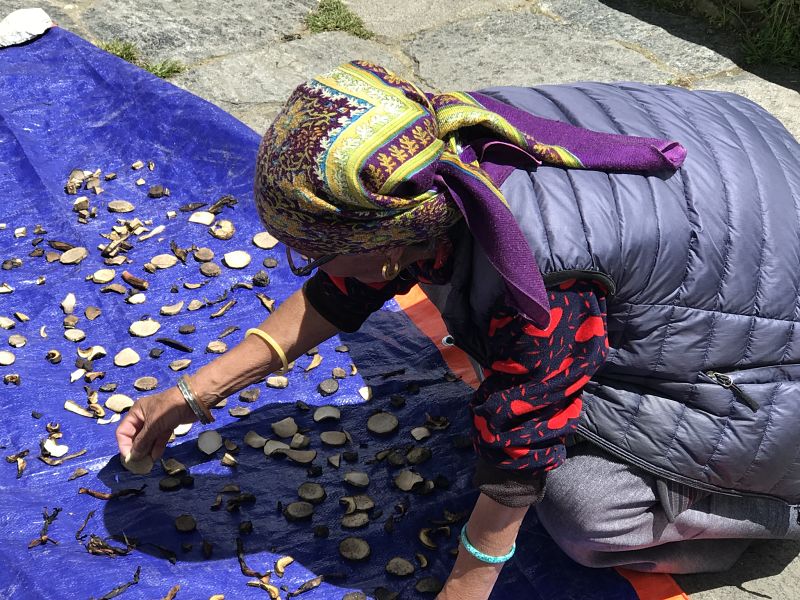
Drying mushrooms
To all this, it must be added that, since many families have opened lodges, the management of the lodges, when the man is outside, is also assumed by women.
There is a fact that has slightly eased this situation in the last 10 years. The arrival of the mobile phone in these mountain areas. Thanks to this, now it is not necessary for men to spend weeks or months in Kathmandu, as before, to find a job. They can do it from home or even during the treks.
Leisure is another part of the Sherpa women’s life, where the new forms of entertainment and social relationships that previously did not exist (bars, basic dancing clubs, snooker clubs) have led to inequality. Girls do less activities outside than guys, and for example, once they are engaged or married, they do not leave in the evenings because they are badly seen.
THE WOMEN’S GROUPS
Given this situation, the Women’s Groups, in each town, have taken a fundamental role in the empowerment of women, in the defence of the environment and also in the preservation of the Sherpa culture. These groups may have, in the larger towns, between 50 and 60 members, aged 25 to 60.
With their actions, in the last 10 years, they have promoted a very important advance in the empowerment of women. The members have to commit themselves to spending time with the Women’s Group and leave home for a while. They learn to be independent of husbands. They begin to want to remain in the villages because, with the training and help of the group, they have more opportunities to get on their way professionally.
The key to empowerment has undoubtedly been the incorporation of training into its activities. They train on leadership, administrative management, awareness and prevention of women’s health (breast cancer, uterus, etc.), English, dances and Sherpa songs.
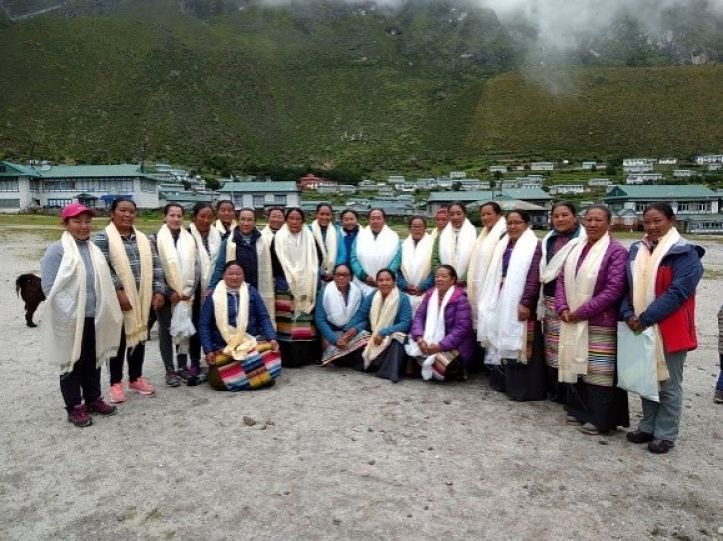
Khumjung Women’s Group 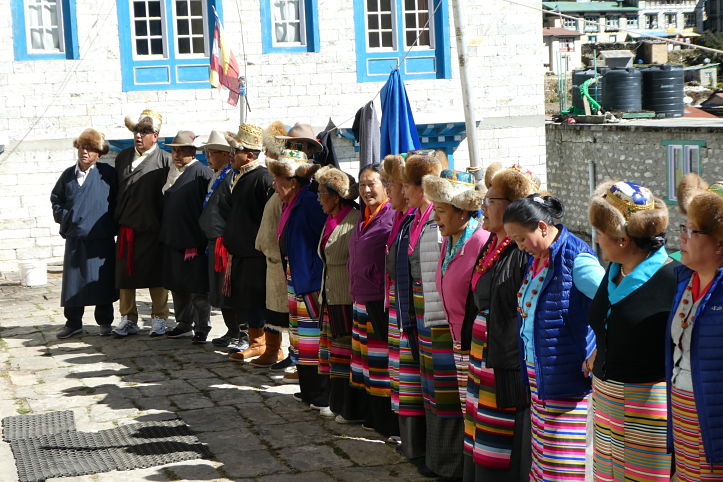
Members of Women’s Group and Youth Club of Namche, during Losar Pulu
In addition to the training activities, in many villages they manage the collection of garbage, usually carried door by door, in collaboration with the SPCC (Sagarmatha Pollution Control Committee), through hired workers. Several times a year, they organize a general cleaning of the village and its surroundings, usually in conjunction with the Youth Clubs. And they also do supportive tasks for poor or troubled families.
Each town develops very diverse projects for the community that can go from volunteering to the organization of the arrival of the Everest Marathon, in Namche, through the construction of the hospital heliport or the way to go to the Hillary Memorial, in Khunde, to make skillets and other kitchen utensils with drinks cans, in Monjo.
THE YOUTH CLUBS
The life of the youth has undergone a great transformation in the last decades, thanks to the training but also as a result of the impact of the tourism. The transformations have been generally positive (training, job opportunities, improvement of the economic level) but there are also negatives (appearance of drugs or alcohol consumption). The awareness of the young people about these transformations led to the creation of Young Clubs in many villages during the 1990s.
They are groups that can reach 80 or 90 members in the larger villages, with more boys than girls (another signal of inequality) between 25 and 45 years. Its activities include training, especially in matters that are useful to create or manage businesses and jobs beyond mountain guides.
They do community work such as helping people in need; carrying patients, walking, to health posts and hospitals; awareness campaigns on drug and alcohol consumption; or, depending on which villages, collecting of garbage.
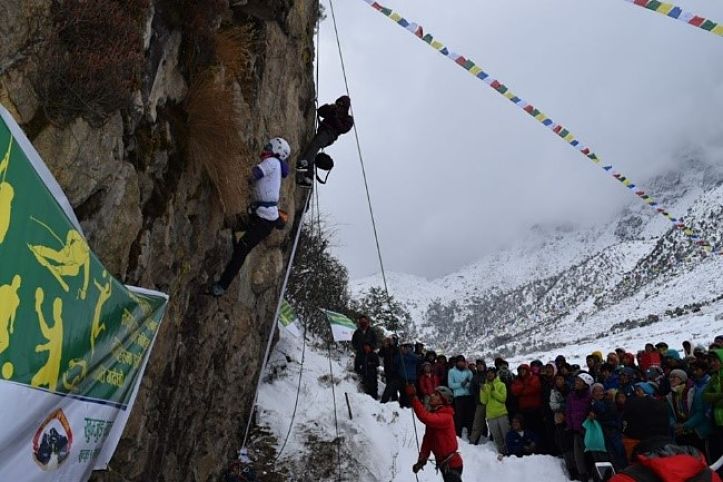
Climbing competition in Khumjung 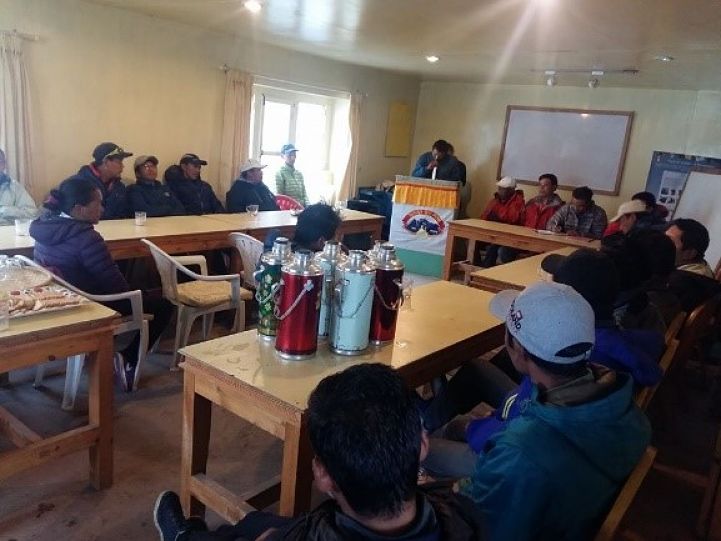
Khumjung Youth Club meeting
They organize sports activities and competitions, and work for the defence of Sherpa culture through theatre, songs, dances or language.
Unlike what happened 15 or 20 years ago, to the question of whether young people make the choice to live here or prefer to go to Kathmandu or abroad, the answer is: stay here. Especially the guys. The girls see more professional and personal opportunities in Kathmandu or abroad.
In some of the meetings with these groups I asked for the religious practice of the youth and they explained to me that most are Buddhist practitioners after they are 30. Earlier, younger people don’t like because they want to be independent and different from their parents, but later, when they understand the reasons and the meaning of religious practices, they get there.
As for traditional festivals, which have many, they explained to me that they are defending them because they are the occasion that people have to meet and make community life. When there were no mobiles or social networks, they were the only moments to be together and to meet each other. Now, although young people all have WhatsApp and Viber groups, and they are always in contact, they also participate in festivals where meet young people and adults, men and women, make offerings and do prayers (since most parties have a religious base ), they dress up traditional dresses, sing and dance, play cards, laugh a lot and spend a lot of time talking. Things that, except talking, at least for now cannot be done by phone.